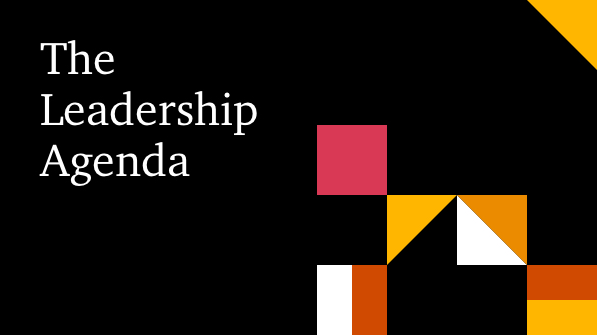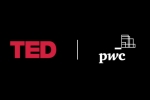If you lead, manage, or plan a workforce, you’re familiar with disruption—and have seen a lot of it lately, including geopolitical and social crises and the biggest public health emergency in living memory. And you’ve spent time and energy on everything from designing remote and hybrid work experiences, to understanding the “great resignation,” to simply trying to keep your people safe.
Against this backdrop, you need to keep sight of the urgent, fast-moving workforce challenges you face—without losing sight of the long game. You need to inspire and support your people now, even as you help them redefine the nature of their jobs and roles so they can thrive in a highly uncertain future. Only by getting the balance right can you create the kinds of sustained outcomes that will benefit the company, your workforce, and even society.
A good place to start is by grounding your thinking in a better understanding of the dynamics that your workforce strategy arises from, and that it depends on. Four underlying forces—specialization, scarcity, rivalry, and humanity—have been shaping workforces at key points throughout human history, and they’re highly relevant again today. Taken together, the forces offer a framework to help companies understand the interplay between workforce strategy, business strategy, culture, and technology. For example:
- A company in the telecom, media, and technology (TMT) sector came to see how its workforce strategy was misaligned with its business strategy and objectives after the company missed out on a significant opportunity, in part because it neglected to anticipate the strategic need for key experts (specialization).
- A large financial-services company recognized that broad skills deficits among employees (scarcity) were contributing to poor customer outcomes—and were in fact a symptom of a bigger cultural problem the company urgently needed to address.
- A large service-sector company slowed its specialist recruiting in cities where competition was fiercest, choosing instead to build a strong presence and feeder network in smaller cities with significant untapped potential (rivalry).
- A coalition of more than 250 companies banded together to improve workforce diversity in their own organizations, while also pushing a much wider set of collective priorities that would improve racial equity in the local community (humanity).
This article will highlight how companies are navigating the interplay of the four forces to help create a more future-ready workforce, and then lay out some practical steps that leaders can take in their own workforce planning. For many leadership teams, the resulting conversations will almost certainly have bigger strategic and organizational implications—and that’s the point. Workforce considerations are at the heart of everything your company is and does, and by grounding your thinking in the four forces, you can keep that lesson front and center for your management team.
First, though, let’s examine the forces themselves.
Meet the four forces
Four forces have shaped workforce strategies at key moments throughout human history—and they’re at it again. By understanding how the forces have operated in the past, you can better prepare your contemporary workforce to weather tomorrow’s challenges.
Navigate the interplay of four forces to create a more future-ready workforce.
Specialization
Since the dawn of agriculture (if not before), specialization has shaped the workforce. Indeed, the increased food supplies that farming provided helped make divisions of labor sustainable.
Technology also encourages specialization. For example, the industrialization of the late 19th and early 20th centuries helped inspire Frederick Winslow Taylor’s theory of scientific management, which influenced the mass production approaches that relied on specialized jobs and machines.
Today, digitization promotes specialization among organizations by easing collaboration. As companies focus on what they do best, they may tap external specialists or ecosystem partners for the rest. Consider how merchants rely on Amazon’s e-commerce engine for sales and fulfillment tasks they formerly would have done in-house.
For individual workers, meanwhile, the effects of technology are visible in any number of highly specialized roles (think data scientists, cyber-risk specialists, or software engineers) that your company must define, harness, and anticipate. The anticipation piece is key for at least two reasons: fail to predict what kinds of experts your business will need, and you will miss opportunities; fail to anticipate how roles are changing, and what were once specialized skills may become less valuable or even obsolete. This can happen anywhere in your organization.
Consider a typical sales force. Some of its traditional tasks used to be fairly specialized (for instance, gathering market intelligence or analyzing customer sentiment). Today, they are significantly augmented by technology. Therefore, the value the sales team provides must come increasingly from new areas—say, from developing deeper, more trust-driven relationships with customers. Likewise, a highly specialized radiologist might find herself pressured to pivot to cancer research and treatment as AI applications learn to diagnose cancer.
As a leader, you face tricky questions in dealing with increasing specialization. How do you develop a view on what new skills you need and when? And where will you get them? Your access to specialized talent may be affected by factors as varied as your employee value proposition and the regulatory environment in which you operate.
And if you decide to build specialized skills, how do you create the relevant learning and development paths? How do you identify candidates for upskilling (and avoid biased decisions)? And finally, how will you organize, structure, and incentivize an increasingly specialized workforce to come together and deliver better customer experiences, higher productivity, and other outcomes that matter?
Scarcity
We live in a world where all manner of shocks can alter the workforce in unpredictable ways. Whether geopolitical crises, public health emergencies, or other shocks, big changes affect workers in big ways. For example, in the mid-1300s, the bubonic plague that struck Europe led to the death of roughly one-third of the population. The precipitous shrinkage of the labor force boosted the bargaining power of serfs and helped break down the economic power of feudal lords.
Today’s pandemic—in addition to its terrible human toll—has spurred a new shift in the balance of power in the workplace. Demand for labor has increased sharply in some industries, as workers have quit to seek better opportunities in new fields (or even started their own businesses).
Scarcity also emerges from technological shifts. For example, automation is creating redundancies in some fields, while a growing need for workers in advanced and emerging technologies is generating shortages in others. Demographic trends also help determine how scarce or plentiful workers are—and have huge economic and social implications.
But scarcity isn’t just about head count or even dealing with the unprecedented challenges of the “great resignation”— it’s also about the abundance of skills your people have. For example, your company may have the right experts and specialists in place, and plenty of workers to fill vital roles. But you may still face a scarcity problem if your workforce lacks the broad-based skills it will need to succeed. The company may have a deficit in leadership or management skills, for example, or decision-making skills, project management skills, or even interpersonal skills. Companies frequently try to address such deficits through skill-building and reskilling efforts.
Finally, the scarcity of skills outside your company also affects you. Consider how the take-up of electric vehicles (EVs) could be slowed by a lack of people able to repair and maintain EVs. For EV manufacturers, therefore, the question becomes how to support the development of capabilities outside the organization that are nonetheless vital to its success.
Rivalry
The revolution in mass production, distribution, and transportation of the late 19th and early 20th centuries created an economic surplus that savvy leaders such as Henry Ford shared with employees in order to stabilize the workforce and retain critical skills. (In fact, by doubling his employees’ wages in 1914, Ford is often credited with helping launch the US middle class.)
Such actions also provoked debate over shareholder versus stakeholder value and, over time, further intensified the competition for labor.
Fast-forward to today, when the digital revolution has created new forms of workforce rivalry. Consider how digitization has blurred traditional sector boundaries; or how the widespread move to remote and hybrid working makes geographic barriers much less relevant; or how technology companies have boosted pay for in-demand skills that companies in other industries also rely on.
As a leader, therefore, your rivalry challenge is both perennial and brand new. As always, you want your organization to stand out as an employer so you can assemble the right people and talent programs in order to bring your business model and strategy to life. But to compete in the future, your strategy might depend on your being able to attract and retain a workforce with a very different set of skills than you have today—to support your move into adjacent businesses. Consider the skills shifts necessary for Apple to move from its roots in product design into services such as banking, and health and well-being.
Humanity
The Renaissance that took place in Europe from the 14th to 17th centuries (and that arose from the aftershocks of the global pandemic that preceded it) brought a rebirth of humanism and the early flowering of the scientific method. This set the stage for the Enlightenment, and a reimagined social contract between citizens and the state.
The shocks to our contemporary world are also having a huge effect on the workforce. Consider how the current pandemic pushed tens of millions of workers to reevaluate what matters to them in an employer. Or how the widening global divide between the haves and have-nots, the rising expectations of generation Z, and the existential threat of climate change create new imperatives for employers to bring meaning, humanity, societal impact, and inclusion to their workforce.
Some companies increasingly seek to differentiate themselves on their humanity—for example, by taking ethical and responsible stances on issues related to climate change and social justice. When successful, such efforts help the world, and help firms attract and retain workers. Indeed, fully 75% of respondents to a recent PwC survey said they wanted to work for an organization that would make a positive contribution to society.
Similarly, if you make your workforce more diverse and inclusive—across all elements of the human experience and identity—you help society while helping address challenges of specialization and scarcity. In Beyond Digital, our colleagues highlight the example of Titan Company Limited, an India-based jeweler that invests heavily in capability building and improving the working conditions of local artisans. This helps the community while supporting a healthy pipeline of workers in jewelry production.
Finally, humanity requires you to think deeply about your company’s culture, with a view to connecting (or reconnecting) people with your organization’s purpose and making clear to them how they may tangibly contribute to it. When the company’s purpose resonates with people, and they see clearly how they further it, not only are they more likely to stay (which could help with any of the other three forces), but they tend to be more engaged—and productive.
Learning from the four forces
Given the highly interrelated nature of the forces, there’s no single best way to approach them. Perhaps one force represents a pressing threat, or an exciting opportunity. If so, start there.
But don’t stop there. The relationships between the forces can themselves be a useful nudge toward valuable conversations with your team—talks that lead to insights in other areas well beyond HR or even workforce strategy. Let’s look at how this is playing out in practice.
The case of the sluggish sales force
A company in the TMT sector was facing slowing growth and a maturing product portfolio. The company’s strategy had always focused on cost—it acquired depreciating assets from other players and managed them for maximum efficiency. This approach was reflected in people’s incentives, and over time became a defining characteristic of the company’s culture. Yet, what had been a strength also created a worrying blind spot as the business environment changed around employees.
This became clear to company executives in the wake of what turned out to be a missed opportunity: a deal proposed by a key customer to partner on improving one of the company’s products. Why was it missed? In part because the account managers whom the customer approached with the idea had a broad-based skills deficit that the TMT company’s leaders weren’t fully aware of (a problem of scarcity). They lacked the management skills and decision-making skills that could have helped them engage with the customer in a new, more collaborative, creative, and potentially quite profitable way.
Similarly, the TMT company’s senior executives had not considered how customers might themselves be a source of innovation, let alone how this might challenge the company’s long-held strategy. Consequently, the company hadn’t anticipated the need for the kinds of engineers it would have required to customize the product (a problem of specialization). Therefore, even if the sales force had pursued the partnership, the company would have struggled to hold up its end.
Finally, all of this was exacerbated by misaligned incentives. The account managers were closest to the company’s customers, and therefore best positioned to spot growth and innovation opportunities, but they were rewarded for keeping costs low. In other words, they weren’t looking for growth opportunities because the company was effectively paying them not to.
The episode was galvanizing for the company’s leadership, spurring them to ask bigger questions, starting with how the strategy ought to change to adapt to the changing environment. Leaders also began soul-searching about how the workforce strategy could better align with the future objectives of the business. It was in posing these sorts of questions that the four forces became part of management discussions.
Ultimately, the discussions about the forces helped inform the company’s choices, including a move to ramp up the business’s learning and development capability to upskill its workforce in targeted areas. The work is continuing, in the form of a new change program to help anticipate workforce skills requirements and match them to the various segments of the company’s product portfolio.
A financial-services company connects the dots
As the TMT company’s example suggests, the four forces can prompt uncomfortable yet necessary C-suite conversations. This was true at a large financial-services company. Specialized skills were not an issue here; the company had formidable pockets of specialized talent. In fact, for years it had been benchmarking specialist tech skills and employee experience metrics against top-tier technology industry players—and not just its direct competitors—to stay ahead of the curve (a smart practice that harnessed rivalry to address specialization).
Nonetheless, company executives could see they were facing a skills scarcity challenge. The organization no longer had enough people in the right places with a deep understanding of regulatory risk, or with “softer” human skills in areas such as collaboration and problem-solving. Moreover, the leaders recognized that they too needed to amp up certain skills to ensure they had the necessary end-to-end vision and deep sense of accountability. Without these things, the executives realized, the company would continue to have a hard time linking its specialists together in a consistent way across its business lines—and customers would continue to suffer for it.
Ultimately, the leadership team saw that the company needed to change its culture in order to put a greater emphasis on care and diligence, renew the organization’s sense of purpose, and start rewarding how work got done and not just what (or how much) work got done. Only then could they be sure to consistently attract and retain the right people.
These realizations sparked a transformation that included improving workforce diversity and inclusion (a focus on humanity); addressing skills deficits in leadership development and succession planning (scarcity); imbuing more humanity into their culture to better attract and retain people (rivalry); and tapping into skills across a wider range of geographic locations to help address both scarcity and specialization.
A service provider gets creative
Rivalry proved to be the force that unlocked a smarter workforce strategy for a large service-sector company. Its executives had started the workforce planning process with specialization in mind—specifically, the need for specialist engineers.
But as the leaders looked more closely, some began challenging the assumption that the company needed to continue to compete strongly in major cities with the largest concentrations of engineering skills. After all, these were the same cities where everyone—including competitors from other industries—was fighting hardest for talent (rivalry).
Instead, the company’s leadership stepped back and got creative. Their plan? Select a region outside the major cities and become the employer of choice there, in part by forging links with local universities, communities, and government authorities (which even offered investment incentives). Although building up the resulting pipeline of talent would take time, the leaders knew that a longer-term approach would ultimately support its business strategy more effectively than simply competing head-on in existing talent hot spots against rivals with potentially deeper pockets.
Seeking greater humanity through partnership
Although the examples thus far have concentrated on the actions of individual companies, some challenges are broad enough or difficult enough—or both—to benefit from a collective response. Achieving greater workplace diversity and racial equity (at its core a challenge of humanity) is just such a problem. To address it, more than 250 companies in the US city of Atlanta have come together under the auspices of the Metro Atlanta Chamber of Commerce to form ATL Action for Racial Equity.
As part of the effort, which launched in February 2021, participating organizations prioritize actions from shared “playbooks” that provide guidance and resources to help advance Black talent, promote inclusive economic development, expand access to education, and invest in workforce development.
The initiative encourages companies to report statistics on Black representation in their businesses and supply chains (to keep feet to the fire), and to promote a range of initiatives that, for example, improve access to credit, create safe spaces on city streets, and work to end the racial profiling of young Black men. The participants are also encouraged to revisit their hiring and development processes to align recruitment and upskilling practices with workforce representation goals. Although the program is in its early days and much work remains, the results to date are encouraging. For example, a recent survey of participants found that 82% of companies track representation of the Black workforce, and 55% assess pay equity across race. Among the participating Fortune 1000 companies, fully 80% have formal supplier diversity programs as well.
Putting it all together
As the examples suggest, when companies start examining workforce challenges and opportunities with the four forces in mind, they often see more than they expect. And that’s the point: your workforce considerations directly affect everything else, including your business strategy, organizational model, and operating approach. Anything that provides more insight into these relationships and how to improve them is worth your time and management attention. Begin with three questions:
- What’s our starting point?
It’s a good idea to document your position against each of the forces. Ask: Which roles risk being automated most quickly (specialization)? Where are our biggest skills surpluses and deficits—and which employees are most at risk of leaving (scarcity)? What’s our employee value proposition, and how could it be stronger (rivalry)? What’s our current commitment to an organizational purpose, as well as to the communities in which we operate (humanity)?
The point of this discussion is to get a clear-eyed baseline of the bets that you have already placed yet might not be aware of. Look closely for how one force might be affecting others in subtle ways.
- Do the forces help or hinder our strategy?
UCLA professor Richard Rumelt reminds us that strategy isn’t an aspiration; it’s a plan. And if your strategy is a good one, designed upon a unique set of attributes or conditions that distinguishes you from rivals, then the four forces are a great (and fast) test to see where things are likely to go right—and wrong—in your strategic execution. Are you really going to hire the 10,000 data researchers next year that your strategy implies? A clear-eyed look at the four forces relative to your strategy could spark some awkward, but important, conversations.
- Can we translate our business strategy into workforce strategy?
Winning companies create differentiation. What’s the unique value your company creates, and what must your people be uniquely good at to make it happen? And by contrast, where are your efforts better spent on creating partnerships and ecosystems?
Now, with this in mind, take your starting point from the first question and look ahead, say, five years. What force shifted the most or the fastest? Where might you be the furthest ahead, or behind? What moves have your competitors been making to undo your plans?
To make these discussions rigorous, use a scenario-based approach—and be prepared to revisit and adjust your scenarios regularly to maximize their efficacy. In a recent PwC survey of business and HR leaders, respondents whose companies used both scenario-based planning and dynamic planning (to revisit strategies and reallocate funding as needed) were nearly twice as likely to say their company had met or exceeded its financial and other targets. This resonates with our experience, which suggests that the most successful companies find ways to keep an eye on the long view, even as they address their more pressing, short-term workforce challenges.
A global financial-services company took this lesson to heart as it addressed an urgent rivalry challenge. Though the company was consistently losing people to competitors, its leaders recognized that their best hope would be in taking the time to invest in a multiyear commitment to strengthening elements of the company’s humanity. The organization dramatically increased efforts to help local communities, made meaningful environmental, social, and governance (ESG) commitments, and doubled down on purpose (and followed its commitments with action). The company carried this spirit through to its reskilling efforts, going so far as to make learning and development a distinctive part of the employee value proposition. By showing employees that leaders were committed to helping them learn and grow, the company has over time improved its relationship with clients and strengthened employee engagement, retention, and productivity. The company’s rivalry problems are now largely behind it. Now, it is the one luring people away from blue-chip rivals.
Want to take “Meet the four forces shaping your workforce strategy” with you? Download as PDF
Need a better workforce strategy? Start here
Four forces—specialisation, scarcity, rivalry, and humanity—hold the key to a winning workforce strategy.

Bhushan Sethi
Joint Global Leader, People & Organisation, PwC United States

Blair Sheppard
Global Leader, Strategy and Leadership for the PwC Network, PwC United States

Nicole Wakefield
Global Leader, Financial Services Advisory, PwC Singapore
The Leadership Agenda
Sharp, actionable insights curated to help global leaders build trust and deliver sustained outcomes. Explore our latest content on the global issues affecting organisations today from ESG to value creation, technology and cyber to workforce transformation.
Explore now


















